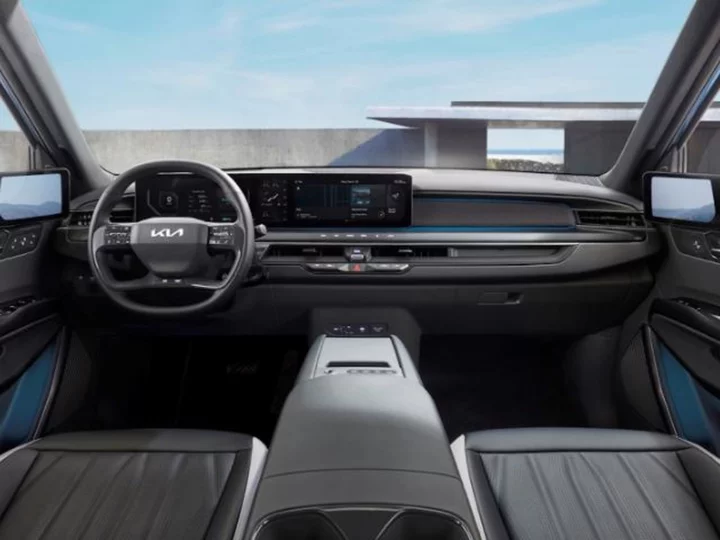Electric vehicles can offer several benefits like quietness, smooth power delivery and lower operating costs. Now, Hyundai Motor Group is adding another amenity to that list: a bigger and better glove compartment.
The newly designed glovebox is modeled on overhead bins in airliners, Hyundai Motor Group said Tuesday. It's both roomier inside and less likely to bonk front-seat passengers on the knees when its door is opened.
It will first appear in the EV9, a large electric SUV from Hyundai-affiliated brand Kia that goes on sale later this year.
The dashboard invention was the gold medal winner in an internal contest at Hyundai Mobis, the auto parts division of Hyundai Motor. Employees were asked to develop new concepts that could be put into production — but this one will work only in an electric vehicle. Here's why.
Crammed in for decades
For decades, glove compartments in traditional gasoline-powered vehicles have been forced to compete for space with air conditioning machinery. The AC blower is usually positioned right behind the glove compartment — not only taking up space that could have been used to store things (mostly not gloves), but also ensuring the box door opens down onto a passenger's knees.
But in an electric vehicle, the lack of a big internal combustion engine under the hood frees up lots of space.
Some of that extra space can handle the blower unit which, in turn, frees up space for Hyundai Mobis's novel glove box design. The door, rather than just flapping down like traditional compartments, instead slides down slightly and out of the way as it's opened.
Inside, the redesigned glove box has 8 liters of storage space — 45% more than the conventional 5.5 liters — according to Hyundai Mobis.
Other automakers have taken advantage of that extra space under the dashboard in other ways. For example, Toyota eschews a glove box entirely in its electric vehicles, the Toyota BZ4X and Lexus RZ 450e. Instead, Toyota designers added extra storage space elsewhere in the cabin and put a hidden radiant heater where the glove box would usually be. In cold weather, that heater depletes the vehicles' driving range less than traditional blown-air heating would, according to Toyota.
Why it's called a glove box
Today's glove box is the direct descendant of storage bins in early automobiles that were usually in the floor or under the seat. Drivers often wore gloves in those days because most cars weren't fully enclosed, exposing them to cold air, dirt and dust.
In her 1909 book "The Woman and the Car: A chatty little handbook for all women who motor or who want to motor," Dorothy Levitt — described in the introduction as "the premier woman motorist and botorist of the world" — discussed the best sort of gloves to wear.
(Levitt, who won a motorboat race as well as car races, advised against wool as it prevents a good grip on the steering wheel.) When getting out of the car, she notes, "You will find room for these gloves in the little drawer under the seat of the car."
"This little drawer is the secret of the dainty motorist," she wrote. "What you put in there depends upon your tastes but the following items are what I advise you to have in its recesses. A pair of clean gloves, an extra handkerchief, clean veil, powder-puff (unless you despise them), hair pins and ordinary pins, a hand mirror — and some chocolates are very soothing sometimes!"
Times have changed. Today, Nationwide Insurance advises on its website that people should keep — besides car-related legal documents — pen and paper, a flashlight, napkins, hand sanitizer and high-energy snacks, among other things.

